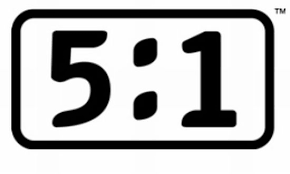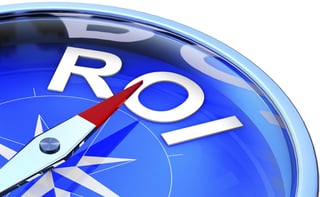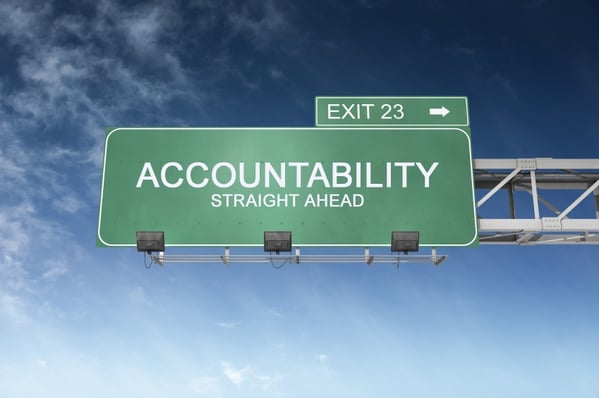When used in conjunction with other metrics, liquor cost can be a useful tool that helps you improve the performance of your bar. If you use a sophisticated bar inventory system that can compare what was sold vs. what was actually poured for every product in your bar, you’ll have the granular data necessary to improve accountability and lower your liquor cost. Ultimately, this will help you increase your bar’s profitability.
 There is a strong correlation between accountability and liquor cost. We call it the 5:1 rule, which states that for every 5% increase in accountability, you’ll experience a 1% reduction in liquor cost.
There is a strong correlation between accountability and liquor cost. We call it the 5:1 rule, which states that for every 5% increase in accountability, you’ll experience a 1% reduction in liquor cost.
The average bar typically experiences about 80% accountability. In other words, 80% of all drinks poured are actually rung into your POS system and sold. The other 20% of products your staff pours are either given away for free or lost due to over-pouring.
Most of the bars that work with Bar-i are typically able to reach 95% accountability within a few months of using our inventory system. This would correlate with a 3% reduction in liquor cost. For bars that started off with slightly better accountability (around 85%), they’ll still typically experience a 2% reduction in liquor cost within a few months. Both of these improvements can significantly help your bottom line.
Assessing Accountability Improvements Solely Based on Liquor Cost Reductions only Tells Half the Story
Bar-i’s inventory software is able to precisely track the difference between your actual liquor cost and achievable liquor cost (your ideal-world liquor cost with 100% accountability). Due to the precision of these figures, this is what our performance reports discuss.
Unfortunately, our bar inventory system isn’t able to measure another important performance metric – the increase in sales you experience due to your improved accountability.
 Logic dictates that if you give away less alcohol, you’ll sell more drinks. However, it’s difficult to determine precisely how many more drinks you sell because there isn’t a direct correlation between improved accountability and increased sales. It’s not certain that reducing every over-poured drink to the appropriate portion size will result in an additional drink sale for each customer. That being said, if you’re giving away fewer free drinks, you’ll certainly increase your sales to some extent.
Logic dictates that if you give away less alcohol, you’ll sell more drinks. However, it’s difficult to determine precisely how many more drinks you sell because there isn’t a direct correlation between improved accountability and increased sales. It’s not certain that reducing every over-poured drink to the appropriate portion size will result in an additional drink sale for each customer. That being said, if you’re giving away fewer free drinks, you’ll certainly increase your sales to some extent.
There’s also another challenge impacting your ability to measure your increase in sales. There’s no way to compare your sales before and after accountability improvements are made because there are other factors that also impact your change in sales, including:
- Changes in weather conditions which impact the number of people who go out on a given night
- Consumer tastes
- Special events which bring an increase in business to your bar
- The business cycle in your town (sales will always increase during the “peak” season and decrease during the “slow” season)
Therefore, it’s impossible to conclusively determine whether the entire increase in sales was due to the accountability improvements you made. For this reason, Bar-i doesn’t try to project these conclusions. We prefer to focus on known quantities in our performance reports.
Viewing Accountability Improvements through the Perspective of Retail Loss
Instead of trying to assess the value of your accountability improvements based on the increase in your sales, you may want to think about the retail loss associated with your accountability figure. If you have a 20% liquor cost, it implies that you sell a product for 5 times what you purchased it for. In this situation, a $100 loss at your cost equates to a $500 retail loss.
However, it’s important to keep in mind that the above-mentioned example represents the maximum possible retail loss. This would only occur if every single ounce that was over-poured would have been sold at full retail value. Since there aren’t too many real world scenarios where you’d achieve your maximum possible retail loss, it’s somewhat of an inaccurate figure.
In a true real world analysis, the actual retail loss figure is somewhere in between the $100 loss in cost and the $500 maximum retail loss, and it depends on the reason your product is missing:
- 1:1 ratio – This occurs when a dink is spilled and your bartender simply pours another drink to make up for the spilt one. If your cost for a $5 drink is $1, then you’ve only lost $1 in this situation.
- 5:1 ratio – This occurs when you give away a drink that a customer would’ve paid full price for. In this situation, your retail loss isn’t $1 for the extra drink poured, it’s the full $5 lost by failing to make an actual retail sale.
The actual retail loss figure for your bar depends on how many of those missing drinks were spilled/over-poured and how many were given away to a customer who would’ve gladly paid full price for the drink.
In order to stay on the conservative side, a reasonable estimate of your actual retail loss ratio is somewhere around 2:1.
What Does this Mean for the True Impact of Improved Accountability on Your Bottom Line?
If your bar does a moderate sales volume of $40,000 a month, a 3% improvement in liquor cost would result in an additional $1,200 in profits. But if you also factor in the effect of your increased sales (using our conservative 2:1 ratio), it means you’re actually making an extra $2,400 a month.
 As a result, you’re undervaluing the true ROI of your accountability improvements if you only consider the reduction in liquor cost and not the increase in sales.
As a result, you’re undervaluing the true ROI of your accountability improvements if you only consider the reduction in liquor cost and not the increase in sales.
If you use Speed Count Pro, the most affordable Bar-i option that provides accountability data, you’re spending $300/month for the service. If you only factor in liquor cost, you’re saving $900/month, which equates to a 300% ROI on our bar inventory services. However, when you consider the adjusted figure that accounts for increased sales, the same $300 monthly expenditure provides you with a savings of $2,100/month, which equates to a 700% ROI.
Most Bar-i clients typically achieve this 700% ROI within two months. Of course, high volume bars with vastly more sales each month will experience an even greater ROI. It should be clear that using a sophisticated bar inventory system that allows you to make significant accountability improvements is well worth the investment.
To schedule a free profitability consultation for your bar, please click on the red button below. Bar-i serves clients nationwide from our offices in Denver, Colorado.



-1.png)